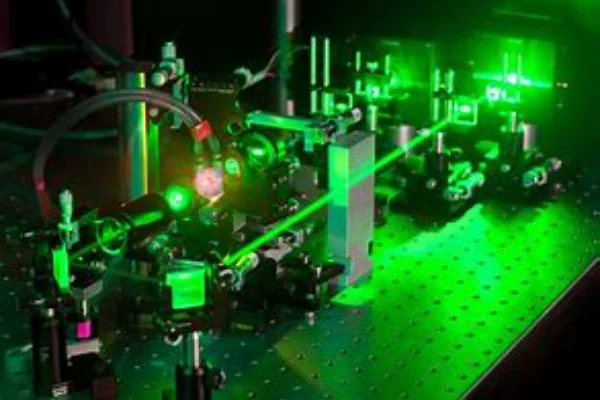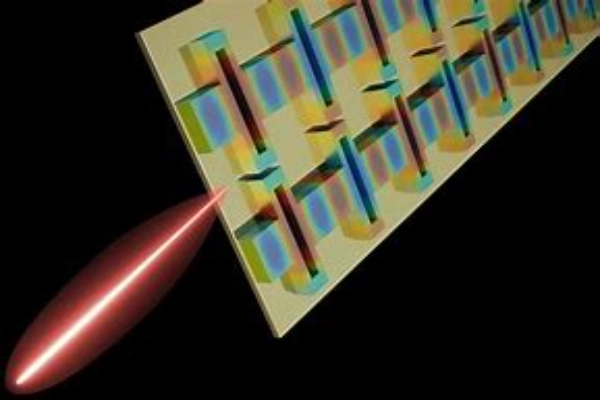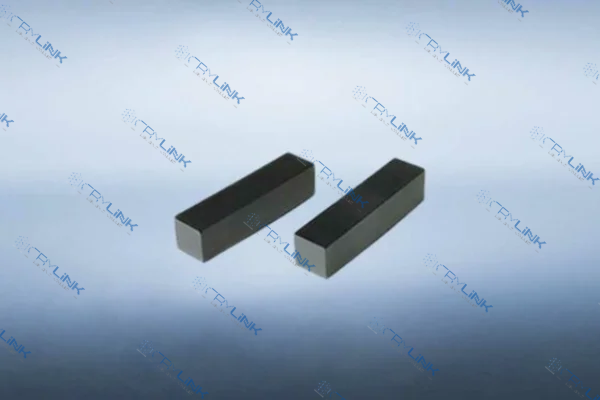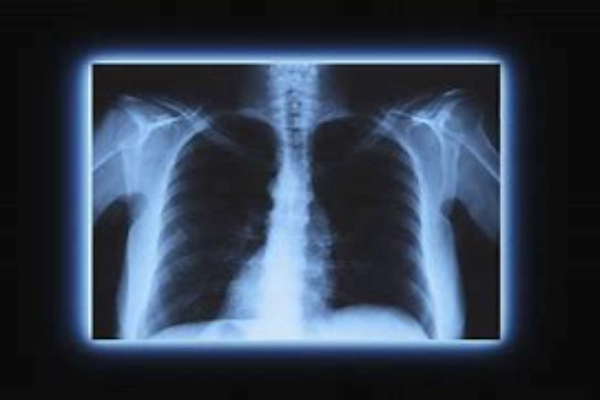Introduction to Terahertz Technology and Solid-State Lasers
Terahertz radiation, situated between the microwave and infrared regions of the electromagnetic spectrum, is emerging as a game-changer in various fields. By harnessing the power of solid-state lasers, we’re stepping into unprecedented realms of spectroscopy, security, and medical imaging. The innovative integration of nonlinear crystals, particularly GaSe and AST, significantly boosts terahertz generation, unlocking myriad applications.

Significance of the Terahertz Spectrum
The Terahertz spectrum, defined by waves operating in the frequency range of 0.1 to 10 THz, holds a distinctive position in the vast expanse of the electromagnetic spectrum. Unlike many other radiations, terahertz waves bear a set of unique attributes that render them particularly vital for a plethora of applications.
For instance, one of the most compelling characteristics of terahertz waves is their remarkable ability to penetrate various non-conducting materials. This ability is not just superficial; it allows for in-depth examination of objects, making terahertz technology indispensable for security screenings. Imagine the convenience of non-invasive inspections that can delve deep into materials, identifying concealed objects or substances without the need for invasive procedures or damage to the object in question.
Additionally, the non-ionizing nature of terahertz waves sets them apart and gives them an edge, especially in the medical realm. While many imaging techniques pose risks due to radiation, terahertz waves ensure minimal harm, opening up avenues for safer medical and diagnostic imaging. This safety feature is particularly vital when regularly monitoring patients or when imaging sensitive parts of the body.
Furthermore, when we talk about the intricacies of spectroscopy, the high spectral resolution of the terahertz range stands out. This spectrum’s ability to offer detailed and distinctive spectral signatures ensures that researchers and scientists can glean richer and more accurate insights into material compositions and chemical interactions. It’s this very precision that makes terahertz-driven spectroscopy techniques a cornerstone for advanced material analysis, promising groundbreaking discoveries and innovations in various scientific fields.
In essence, the Terahertz spectrum, with its trifecta of penetration abilities, non-ionizing properties, and high spectral resolution, is a testament to how specific wavelengths can revolutionize industries and scientific endeavors. Whether it’s for ensuring security, advancing medical imaging, or pushing the boundaries of spectroscopy, terahertz waves are proving to be an invaluable asset in the modern technological landscape.

Applications of Terahertz Lasers in Spectroscopy
The realm of spectroscopy is undergoing a paradigm shift, thanks to the introduction of Terahertz lasers. At the forefront of this transformation is terahertz spectroscopy, which is redefining the benchmarks for chemical and material analysis. The depth and breadth of detail it provides are unparalleled, opening up new vistas of exploration and understanding.
One of the most salient applications of terahertz waves in spectroscopy lies in the arena of molecular dynamics. With these waves, scientists can delve into the intricate world of molecules, observing their vibrations and rotations with an astoundingly high degree of precision. This is not just about observation for the sake of it. By understanding these molecular movements and interactions, we can gain deep insights into chemical compositions. This has a ripple effect on industries ranging from pharmaceuticals to food science, where knowing the minutiae of molecular behavior can lead to better drug formulations or improved food quality.
Beyond the microscopic world, terahertz waves are revolutionizing material analysis. Terahertz spectroscopy offers an enhanced capability to characterize materials at levels previously deemed unreachable. For instance, determining hydration levels in materials was once a complex process, but with terahertz lasers, scientists can ascertain the exact water content in substances, which is crucial in fields like agriculture or construction. Additionally, the terahertz spectrum sheds light on the very essence of materials, providing detailed insights into their molecular structures. This can be game-changing, especially when trying to understand new compounds or alloys.
But perhaps, one of the most striking applications is the ability to detect hidden defects. In industries where material integrity is paramount, such as aerospace or civil engineering, spotting a minuscule defect could mean the difference between safety and catastrophe. Terahertz lasers, with their exceptional penetrative abilities, can identify these imperfections, ensuring that materials stand up to the highest standards of safety and quality.
In essence, with its capacity to unveil the unseen, from molecular dance to concealed material flaws, terahertz spectroscopy is setting new gold standards in material and chemical analysis.

Enhancing Security with Terahertz Technology
Security in contemporary times is not just about physical barriers or guards; it’s about the innovative integration of technology to preempt threats, both visible and concealed. At the nexus of this technological evolution stands terahertz technology, an unassuming powerhouse that is redefining security paradigms across the globe.
Imagine a scenario where authorities can detect concealed weapons or contraband hidden under clothing or inside packages without any physical contact or invasive measures. Terahertz waves make this vision a reality. These waves have the remarkable ability to traverse through various materials like clothing, paper, and even certain walls. As they pass through, they can detect anomalies or hidden objects, ensuring that threats are identified long before they manifest. This not only streamlines security protocols at places like airports or border checkpoints but also ensures a less intrusive experience for individuals, striking a balance between security and privacy.
But the prowess of terahertz technology is not limited to just spotting concealed objects. In a world increasingly wary of biochemical threats, the technology offers an unparalleled advantage. Every biochemical substance, be it a harmless liquid or a potential biohazard, has a unique molecular fingerprint. Terahertz waves, with their acute sensitivity, can discern these fingerprints, swiftly identifying harmful agents. This capability is invaluable in scenarios where swift detection and response are of the essence, such as at large public gatherings or sensitive installations.
Furthermore, the non-invasive nature of terahertz inspections ensures that objects, even delicate ones like historical manuscripts or artwork, are not damaged during the inspection process. This opens up applications far beyond conventional security checkpoints, including museums, archives, and cultural heritage sites.
In a nutshell, as the tapestry of threats grows complex, terahertz technology offers a beacon of hope. Its ability to detect concealed items and recognize biochemical threats, all while ensuring minimal intrusion or damage, positions it as an indispensable tool in modern security apparatuses. As we venture deeper into this era of uncertainty, terahertz lasers are poised to be the vanguards, ensuring a safer and more secure environment for all.

Pioneering Medical Imaging Techniques
In the realm of medical science, the quest for precision, accuracy, and safety is ceaseless. Terahertz lasers, with their unique properties, are ushering in an era of innovative imaging techniques that promise not just enhanced clarity, but also a significant reduction in potential risks associated with conventional imaging.
Take, for instance, the challenge of imaging soft tissues in the human body. Traditional methods like X-rays, while effective for certain applications, come with inherent risks due to ionizing radiation. Terahertz waves, in contrast, offer a safer alternative. Their ability to penetrate soft tissues and provide high-resolution images without the ionizing risks associated with X-rays makes them a beacon of hope in the medical community. This feature becomes particularly invaluable when detecting early-stage tumors. Identifying these malignancies in their nascent stages can drastically improve treatment outcomes and patient prognoses, making the role of terahertz lasers in oncology truly groundbreaking.
Beyond direct human imaging, terahertz lasers are finding resonance in pharmaceuticals. Medications, as we know, are not just about the active ingredients but also about their delivery mechanisms. Here, terahertz imaging showcases its prowess. For example, when examining tablet coatings – a crucial component that determines drug release timings and efficacy – terahertz imaging can analyze and ensure that these coatings are uniformly distributed. Such uniformity ensures that drugs are released at the desired rates, optimizing therapeutic effects and minimizing side effects. Thus, ensuring that medications work as intended becomes easier and more precise with the incorporation of terahertz technology.
In conclusion, the integration of terahertz lasers in the medical domain stands as a testament to the symbiotic relationship between technology and healthcare. By providing safer imaging options for patients and ensuring the highest standards in pharmaceuticals, terahertz lasers are shaping the future of medicine. As we move forward, this synergy promises a healthcare landscape where diagnostics and treatments are not just effective but also inherently safer, paving the way for a healthier world.

The Role of Nonlinear Crystals in Terahertz Generation
The generation of terahertz waves, pivotal for myriad applications from medical imaging to advanced spectroscopy, has been a subject of extensive research. Central to these advancements are nonlinear crystals, which play a crucial role in effectively generating and amplifying these waves. Among these, GaSe and AST crystals have emerged as game-changers, dramatically enhancing the efficiency and output of terahertz generation.
Gallium Selenide (GaSe), a compound with remarkable properties, has garnered significant attention in this domain. The inherent high nonlinearity of GaSe makes it an ideal candidate for efficient terahertz wave generation. But it’s not just about the generation; GaSe’s phase-matching capabilities are exceptional. Phase matching, which is pivotal in ensuring that the generated waves are coherent and of high intensity, is adeptly managed by GaSe. These combined attributes mean that GaSe not only facilitates the generation of terahertz waves but also amplifies them, leading to outputs that are both potent and precise.
On the other hand, the AST crystal, another nonlinear medium, offers its unique set of advantages in terahertz wave generation. Its crystalline structure is distinct, allowing for unmatched phase matching. When it comes to terahertz generation, phase matching is indispensable as it ensures the waves are generated in sync, leading to higher intensities and coherent outputs. Additionally, AST’s expansive transmission range further amplifies its utility. This wide range means that a broader spectrum of terahertz waves can be generated and harnessed, opening up even more avenues for application.
In essence, while the quest for efficient terahertz generation has many facets, nonlinear crystals, especially GaSe and AST, stand out as linchpins. Their unique properties, from high nonlinearity to exceptional phase matching, are paving the way for groundbreaking improvements in terahertz wave generation. As technology continues to evolve, the role of these crystals will undoubtedly remain paramount, driving innovation and expanding the horizons of terahertz applications.
Conclusion
The convergence of terahertz technology with solid-state lasers is undeniably shaping the future of spectroscopy, security, and medical imaging. As we delve deeper into the potential of nonlinear crystals like GaSe and AST, we are not only enhancing terahertz generation but are also unlocking vast avenues, each promising advancements that can redefine industries.
FAQs
- What is the frequency range of terahertz waves?
Terahertz waves operate in the frequency range between 0.1 to 10 THz. - Why are GaSe crystals crucial for terahertz generation?
GaSe crystals offer high nonlinearity and excellent phase-matching capabilities, leading to efficient terahertz wave generation. - How do terahertz waves differ from X-rays in medical imaging?
Unlike X-rays, terahertz waves provide safer imaging of soft tissues and are especially beneficial for detecting early-stage tumors. - In what applications is terahertz technology primarily used?
Terahertz technology finds applications in advanced spectroscopy, security screening, and medical imaging. - What role does AST crystal play in terahertz generation?
AST, with its unique crystalline structure, enhances phase matching and boosts the transmission range, amplifying terahertz output.

Frank
Frank graduated from the University of Shanghai for Science and Technology, majoring in optics. As a technical engineer at Crylink Company, he deeply understands crystal materials and laser components.
Related Video(s) with this Article
Related Product(s) with this Article
Related Application(s) with this Article
